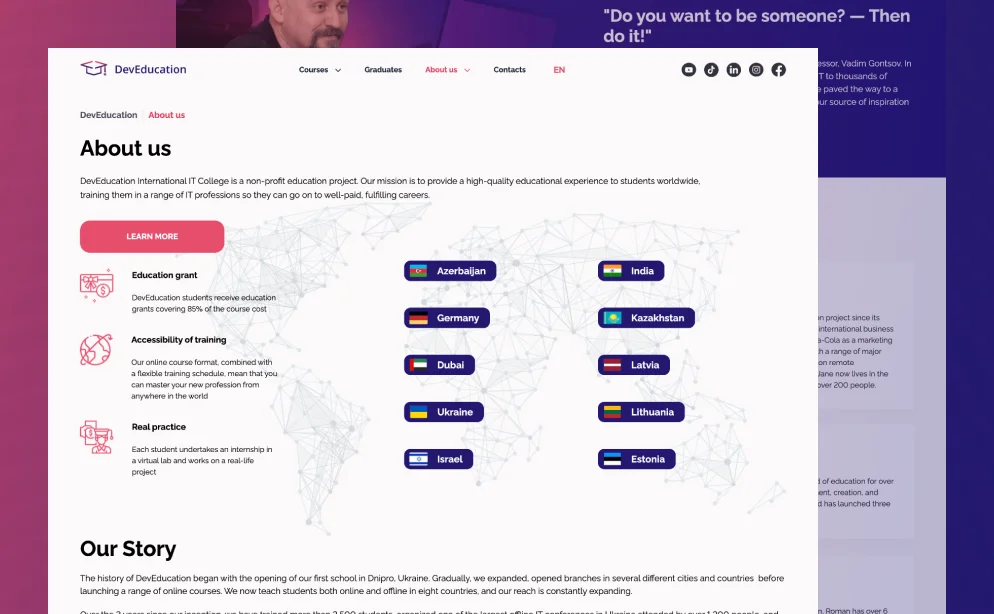Cutting edge platforms use AI to generate test cases to be executed on the cloud as part of the continuous integration/continuous delivery (CI/CD) pipeline). While these platforms It don’t replace developers, they can help to automate their work so they can focus their time on new features and big ideas, rather than on coding repetitive but essential tests, or on figuring out the back end complexities. Integrating low-code/no-code platforms into DevOps practices represents a promising solution to address current challenges in the industry.


Platforms can help streamline these processes by providing automated testing capabilities and tools for managing deployments across different environments. Platforms are integrated with DevOps practices, security can be embedded throughout the software delivery pipeline. This results in a more secure and reliable software product by design, rather than relying on reactive security measures. Well, generic algorithms can only go so far in creating truly unique and innovative experiences that solve real-world business cases. More broadly, automation platforms offer a hybrid of low-code and coding capabilities for more complex automation use cases.
Low-Code: Bridging the Gap Between DevOps and Business
Pre-configured components reduce the risk of bugs or bad code, and the best low-code tools automatically scan code (in real-time) for risky design patterns and recommend alternatives to improve maintainability. With that guidance in a single, centralized dashboard, it’s easier to monitor ongoing application health and collaborate on functionality. Low-code visual design tools clearly show any team member how a proposed application’s functions are mapped out—no coding knowledge required. Visual design tools for process management offer an intuitive, flowchart-like map that lets each team member easily understand what their tasks are and how they fit into the broader workflow. But the challenge when you’re working with a very complex application like Salesforce CPQ is that it’s quite risky to make changes directly in production because you are potentially impacting the ability of your company to sell.
- They regularly update the community with news about no-code tools and experiences.
- The relative difficulty of large manual coding assignments, often leaves companies with bugs, bad code, and an exhausted dev team.
- Since you can’t add pro developers and you can’t add amateur developers, and you already believe in new methods, the only thing left is to adopt higher-productivity tools.
- In any case, leveraging the combined strengths of DevOps and low-code will help you streamline development.
- For example, a more niche case could be as specific as identifying cracks in a windshield.
- Low-code components continually evolve to protect against new common vulnerabilities and exposures and adjust to changing regulatory requirements, which means applications built with low-code can be instantly futureproof.
Developers and collaborators deliver secure applications with minimal effort. Enterprise-grade low-code platforms enable “software, safer, sooner” by baking security into development tools and automating the delivery of secure software—including native rendering on mobile devices—without slowing the process down. At each step in the development cycle, objects and the application https://www.globalcloudteam.com/low-code-app-development-pitfalls/ are automatically tested for security issues so they can be addressed as soon as they are identified. One of the biggest challenges companies face is the difficulty of making changes safely and quickly to their IT systems. As companies move to becoming digital enterprises, more and more departments are building competency in creating and managing their own systems.
Trends from the marketplace
This significantly improves the workplace experience and enables developers to focus their time on delivering more complex, high-quality solutions. By integrating business and low-code technology in DevOps, we have finally found the next big improvement in software development – BizDevOps. Low-code allows organizations to continuously improve processes by building a continuous feedback loop from application development to deployment that aligns with business needs, seamlessly putting business, development, and operations together.


Its simplicity, agility and AI-driven capabilities enable organizations to embrace a more efficient and effective approach to testing. By bringing together development, IT/operations, and the business stakeholders, BizDevOps allows an organization to quickly implement feedback from the end-users. Teams can work across all three functions to speed up development and continuously improve solutions to meet business expectations. To understand the next step in process improvement, let’s take a look back. In the 1990s, software companies found immense improvement in solution development by implementing Agile processes.
DevOps in No-Code and Low-Code Environments
Integrating low-code and no-code tools into the DevOps process could be a viable solution to address the talent gap. These tools offer various benefits and efficiencies, including streamlining the work of existing DevOps professionals and enabling organizations to expand their teams beyond traditional personnel sources. Leveraging these tools could give companies in the DevOps industry a competitive advantage. If they can’t connect with their customer, engage with their customer, if they can’t service their customer, our whole expectation of what it means to interact with businesses has just increased. We as an audience are much more demanding of the companies that we interact with than we ever were before. The piece that those companies have to move at has no changed, just step changed in terms of what we expect from them.
A look at the challenges and advantages of DevOps and low code approaches, with an eye toward the most effective solution for the enterprise. Deployment strategies for low-code and DevOps include blue-green deployments, canary releases, and rolling updates, which help minimize downtime, reduce risk, and ensure smooth rollouts for new application versions. Monitoring and managing your low-code DevOps pipeline involves tracking application performance, analyzing log data, setting alerts for critical events, and utilizing metrics and dashboards to assess the health and performance of your pipeline. For example, a more niche case could be as specific as identifying cracks in a windshield. Or, in a financial industry, it might be analyzing mass amounts of loan applications to determine approval rates. In these situations, using your own internal data becomes necessary to create AI that understands the situation at hand.
Data Deploy
During the early days of the COVID-19 pandemic, many organizations were compelled to accelerate their digital innovation to adapt their business activities to the new normal, or find new ways to compete against more nimble competitors to stay afloat. To enable delivery of their services to suddenly distributed customers and employees, they began to switch to low-code development platforms to deliver solutions faster. At its most basic level, DevOps—a combination of development and operations—refers to a set of practices that streamline application https://www.globalcloudteam.com/ development at every stage, from building and testing to deploying and monitoring. DevOps largely aims to break down silos and improve collaboration for teams looking to increase agility without compromising on software quality. Unfortunately, traditional high-code methods of development present a few challenges to successful DevOps transformations. To address the potential challenges of low-code/no-code platforms, organizations must establish governance policies and procedures to ensure adherence to security and quality standards.


This ensures that applications remain maintainable, scalable, and optimized for performance in the long run. “Anywhere there’s data, there’s an opportunity to create models and make predictions based on that data,” said Pingel. For example, consider visual inspection in a pharmaceutical production line to ensure there are no defects with any pills. Another use case is visual inspections of parts in automotive assembly lines. Applied to these scenarios, AI can remove grunt work and make production safer and more efficient.
How Low-Code /No-Code Revolutionize DevOps
Platforms with DevOps, it’s essential to effectively monitor and manage your pipeline. By keeping a close watch on your application’s performance and the overall health of your DevOps processes, you can address potential bottlenecks and issues early on, maintaining the highest quality standards for your software. This platform also provides a comprehensive set of tools for building, deploying, and managing applications, making it a perfect fit for DevOps workflows.


People who make the switch from traditional coding to no-code development often say that it feels like a new world. It’s fast, easy and efficient—and you can create beautiful results with relatively little effort. Naturally, since low-code/no-code technology removes the need for and additional cost of developers, it helps you cut those costs as well.
SKILLS SHORTAGE DRIVES LOW CODE
Maybe your organization has a dedicated DevOps team, or maybe a senior engineer has taken on DevOps responsibilities. You might have engineers and business analysts already using low-code methods, or you might be researching and evaluating low-code platforms. In any case, leveraging the combined strengths of DevOps and low-code will help you streamline development.
